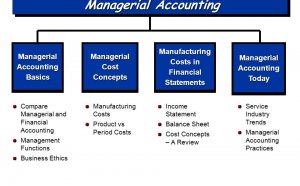
Law Firm Accounting and Financial Management
There are two basic methods for keeping track of law firm financial performance: accrual versus cash accounting.
Accrual records reflect income irrespective of whether cash has been collected. In other words, accrual accounting reflects billings, work in progress (completed but not yet billed) and accounts receivable (work billed but not yet collected).
Cash accounting, on the other hand, reflects only collections, never billings or work in progress. Almost all small law firms operate on a cash basis, accounting for cash as it comes in and goes out. Larger law firms maintain both cash and accrual records.
Income statements, also called profit and loss or P&L statements, tell how well a firm did financially in a given period of time. Income statements use the accrual method to tell how much revenue has been billed, how much expense has been accrued, and how much net income or profit resulted.
Income or profit figures generally have little relevance to small law firms. Small professional service firms typically operate on a cash basis, with the lawyer's salary or draw coming from positive cash flow.
For the smaller practitioner, the analysis of profitability determinants is relatively simple because, as we've written in this column previously, it is based on cash flow. Financial analysis is a process of identifying and deducting the expenses of the practice from monthly cash received. Fixed expenses typically include:
- staff, including salaries and taxes;
- occupancy (rent, taxes, utilities);
- equipment (including depreciation);
- malpractice insurance; and
- outside professional services.
The largest single expense that should be variable is the partner or shareholder's draw or salary. This reflects the lawyer's personal needs and style of living, and the most sensible practice is to increase it only as the firm's performance produces sufficient income to do so. Amounts set aside for savings and retirement should be approached similarly to salary.
Within these parameters, any attorney can do a personal P&L statement to document individual financial performance. The calculation is a basic one: billings - [total compensation + direct and indirect expenses] = net profit.
All of this is dependent on revenue, which for a small practice can be variable. A good method for estimating it is the accounting measure of turnover ratio: accounts receivable balance divided by the result of billings per days in the billing period (either monthly or annually). The turnover ratio tells a lawyer to expect payment for billings X number of days after a client receives a statement.
The national average for law firms, according to one survey, is between 120 and 150 days - as much as five months. That means that a typical small firm should have funds sufficient to operate for at least six months without new billings coming in.
Play 1win prediction bot today
YOU MIGHT ALSO LIKE



Share this Post
Related posts
International Journal of Managerial and Financial Accounting
Editor in Chief: Dr. Matteo Rossi ISSN online: 1753-6723 ISSN print: 1753-6715 4 issues per year Subscription price IJMFA…
Read MoreManagerial and Financial Accounting
Managerial finance is the branch of finance that concerns itself with the managerial significance of finance techniques…
Read More










